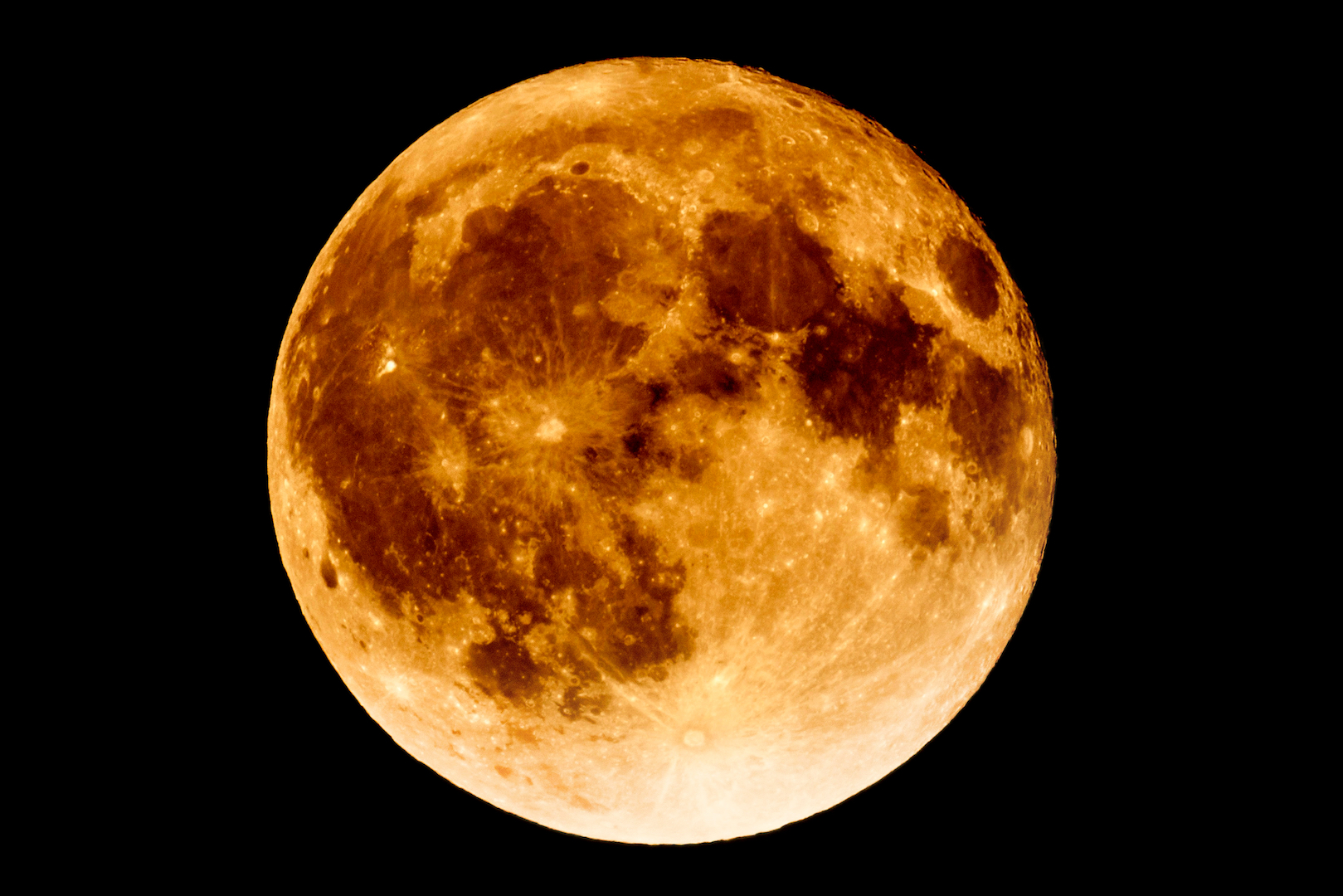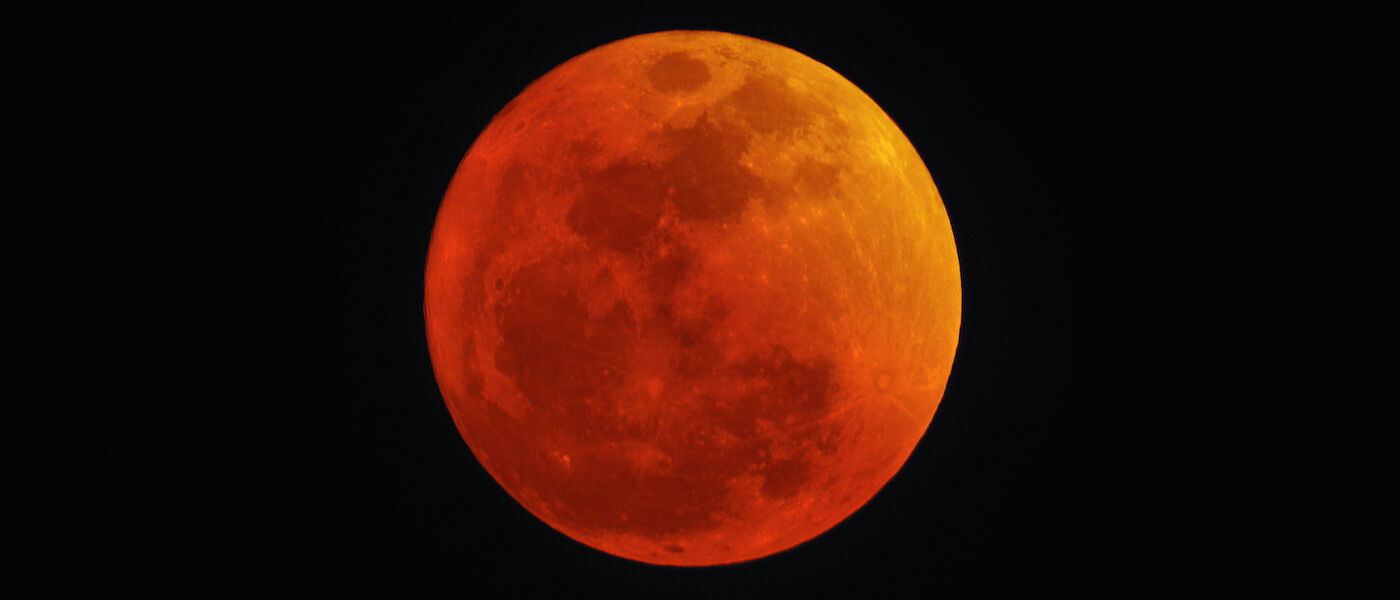Super Blood Moon?! What to Expect

On Sunday, Jan. 20, you'll be seeing red! The full moon will be bigger and brighter than usual until 10:33 pm when it begins to slip into the Earth's shadow. You can learn all about this Super Blood Moon and see it for yourself during Lunar Mania at Liberty Science Center!
At this all-ages event, you will be able to observe the eclipse alongside experts through a telescope, learn all about eclipses in our planetarium, make your own craters, and more. The entire eclipse will last for 3 hours and 17 minutes, with the peak of the eclipse (when the moon enters the deepest part of the Earth’s shadow) occurring for 1 hour and 2 minutes. These special activities start at 6:00 pm and run until 1:00 am. Video of the eclipse will be streamed on our massive screens, providing a perfect view, rain or shine.
So, why are we so excited about this eclipse?
Not only does it look awesome (hint: “blood” moon!), this is the last total lunar eclipse that will be visible from the United States until 2022. This has to do with the fact that the Earth, Moon, and Sun all have to be lined up perfectly. The Moon doesn’t orbit Earth on the exact same plane that Earth orbits the Sun, so this alignment doesn’t happen every time we have a full moon. When the three objects do line up, though, Earth blocks most of the Sun’s light, casting a shadow that the Moon passes into.
A lunar eclipse can only happen during a full moon,
because that is when the Earth is between the Moon and the Sun.

So why will the Moon look red? When the Earth blocks the sunlight, it doesn’t block all of the light. Some light still passes through and is bent by our atmosphere, just like how we can still see daylight after the Sun has set below the horizon every night. During sunsets and sunrises, the sky turns red, pink, and purple. This is because our atmosphere scatters the light. Only the longest wavelengths, reds, make it through the atmosphere to our eyes.
When the Earth blocks the Sun during a lunar eclipse, some of the light will still pass through our atmosphere, and the reddish colors will make their way to light the surface of the Moon. If we had no atmosphere, the Moon would completely disappear into blackness (plus we wouldn’t be able to breathe!).
Because of our atmosphere, total lunar eclipses can tell us about Earth. The darker the shade of red, the more ash (from volcanoes and fires), pollution, and clouds there are in the atmosphere at the time. What shade of red do you think we will see during this eclipse?
Join us Jan. 20, 2019 for Lunar Mania! Click here for more info and details on how to get your tickets, and click here to see a full list of shows playing in LSC's Jennifer Chalsty Planetarium, the biggest planetarium in the Western Hemisphere.
